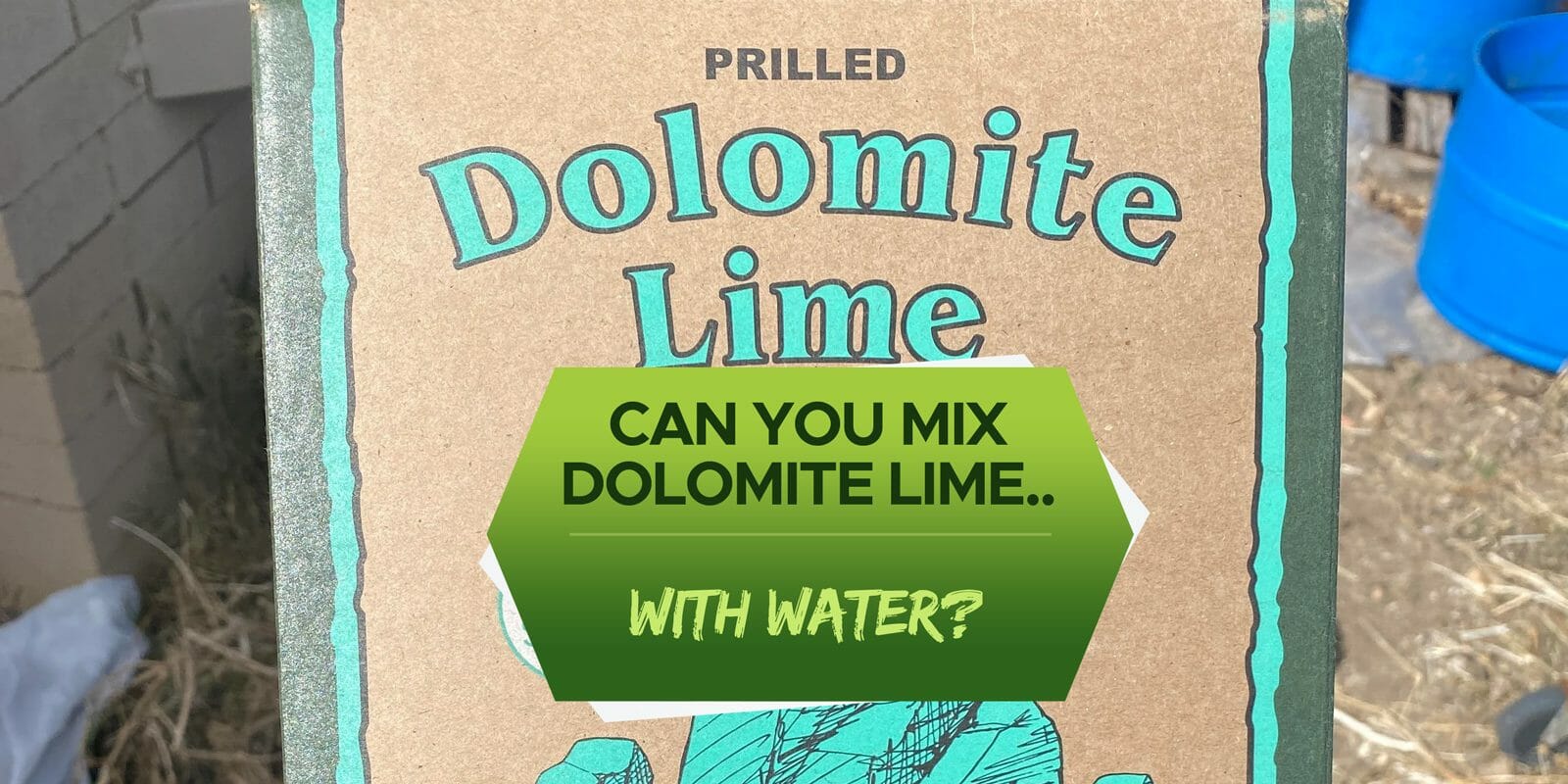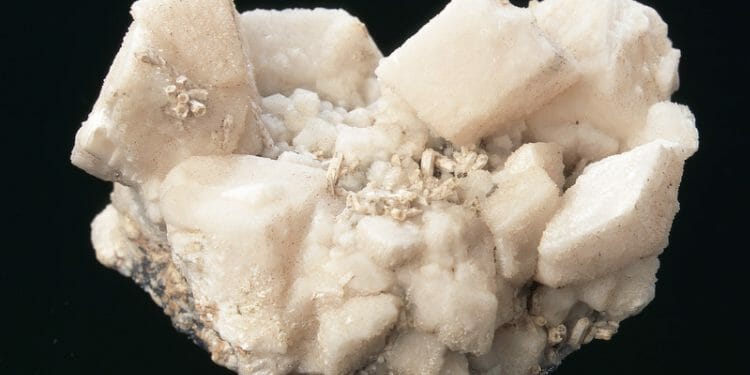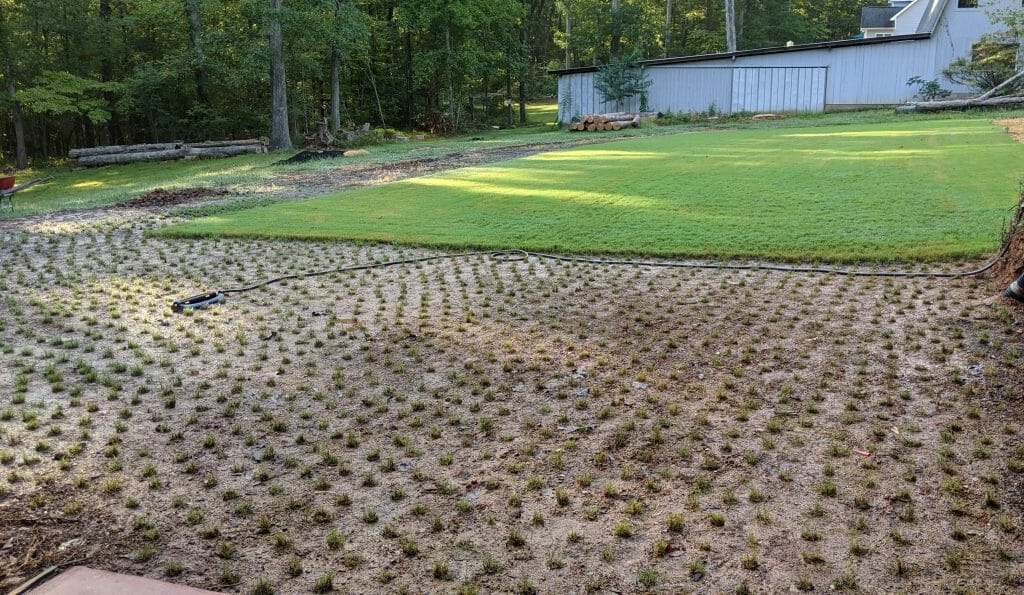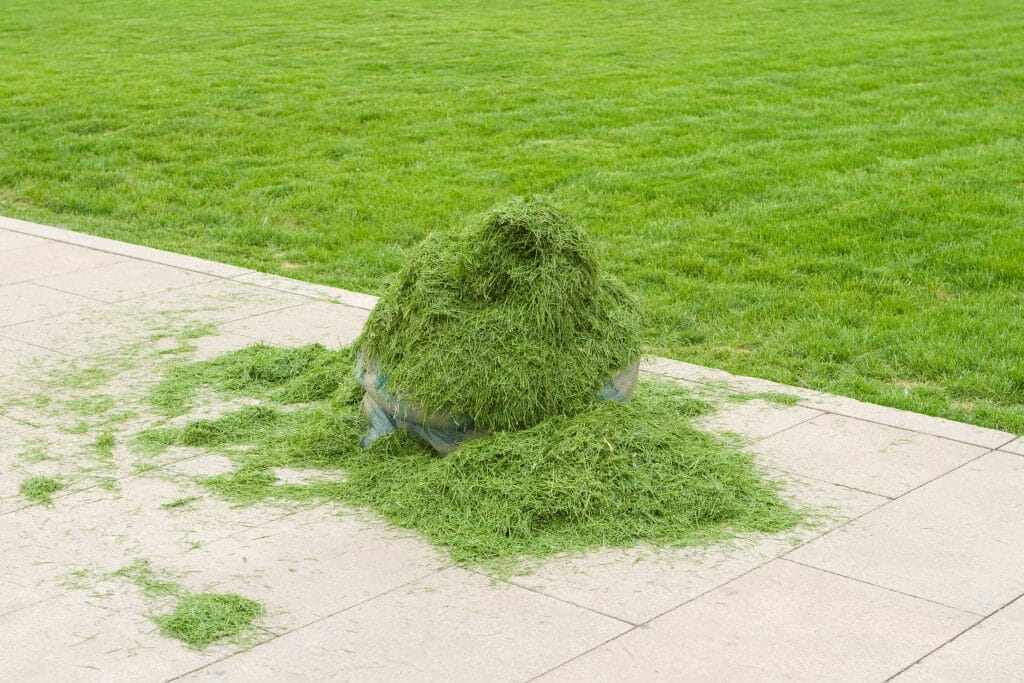
Many gardeners use dolomite lime to help increase the pH level of their soil. It’s a natural mineral that is derived from limestone and is high in calcium. This form of calcium is one that is easily absorbed by the roots of plants and can be quite beneficial in gardens with acidic soil. But, can you mix dolomite lime with water?
Essentially, mixing dolomite lime with water serves no purpose. This is because limestone is a rock mineral and will not dissolve. Plus, the tiny particles of dolomite lime will clog up the spout of your watering can. It’s much better to spread dolomite lime over the surface of the soil and then rake it in before applying water.
What Is Dolomite Lime?
Dolomite lime is harvested from underground limestone deposits. It contains good doses of both calcium carbonate and magnesium carbonate. When harvested, the dolomite lime crystals can be gray, white, tan or pink in color.
It’s a common soil enhancer used by gardeners because it will help to raise the pH of the soil and also add calcium and magnesium, making these readily available to growing plants.
What Are The Benefits Of Adding Dolomite Lime To The Soil?
The major benefits of adding dolomite lime to the soil is that it adds a good dose of both magnesium and calcium and also helps to raise the pH of acidic soils. It’s actually the addition of calcium and magnesium that makes the soil less acidic.
A byproduct of increasing the pH of the soil is that nutrients are more readily available to plants. Micro-nutrients such as iron can often be tightly bound in acidic soils, so the roots of the plants cannot absorb them.
It is actually better to use dolomite lime to amend your soil rather than using just straight lime. This is because ordinary lime can add a greater amount of calcium to the soil minus the magnesium.
This oversupply of calcium will usually inhibit the plants from being able to access the magnesium so it can be transported up the plant via the roots.

What Is The Best Way To Add Dolomite Lime To Your Soil?
The first thing you want to do is a soil test. Do this before adding any amendments to the soil. You can purchase a soil testing kit at your local garden center or nursery. This will give you an indication as to whether your soil is highly acidic and whether there are important nutrients missing.
Once you’ve established that you have acidic soil and that your soil may be lacking in calcium and/or magnesium, it’s time to add some dolomite lime.
The best way to do this is to spread it evenly over the surface of the soil using a fertilizer spreader and then till it in. If you are unable to till your soil, at least try and rake the dolomite lime into the soil as best as you can because this will have the greatest benefits for your plants.
Once you’ve done this, make sure that you water the soil as this will push the dolomite lime deeper where it will do the most good.
Alternatively, you can add smaller amounts of dolomite lime to the soil around your plants. Especially those that don’t like acidic soil. Just scatter the lime over the soil and lightly rake it in, being careful not to disturb the roots of your plants.
Even lawns will benefit from an addition of dolomite lime now and again. Use a fertilizer spreader to evenly spread the lime over the lawn and water it in.
How Much Dolomite Lime Should You Use?
How much dolomite lime you use will depend on the current pH level of your soil and how much you want to raise it by. Remember that it is possible to add too much dolomite lime so you want to get this right.
Check the instructions on the package because these should indicate how much dolomite lime you should be adding to your soil.
To raise your soil pH to a relatively neutral level of around 6.5 to 7, here’s a handy chart of how much dolomite lime you’re going to need to apply per 100 square feet of soil.
| Current Soil pH | Amount of Dolomite Lime to Use |
| 5.0 | 10 pounds per 100 square feet |
| 5.5 | 5 pounds per 100 square feet |
| 6.0 | 3 pounds per 100 square fee |
Adding Dolomite Lime To Water
The only time that it’s advantageous to add dolomite lime to water is if you have a pond in your garden. The dolomite lime will raise the pH of the water and also buffer it. This will help to maintain the water’s pH level at around 7.0 to 8.5.
Additionally, adding dolomite lime to the water in your pond will make nutrients more readily available to plants and other organisms that are living in the water.

Frequently Asked Questions
Is dolomite lime water soluble?
In its natural form, dolomite lime is not water-soluble. However, you can get specially formulated fertilizers containing primarily dolomite lime that are soluble in water. This is because the limestone has been ground into a fine powder that will eventually dissolve in water.
How should dolomite lime be applied?
Ideally, you want to spread the dolomite lime evenly over the soil surface and then rake it in so that it starts to mix with the clay particles or the sandy soil. Then, water it in well.
Is dolomite lime safe?
Dolomite lime is regarded as nontoxic to either humans or pets and doesn’t harm wildlife either.
Final Thoughts
Dolomite lime is a natural mineral derived from limestone deposits. Therefore, it is not water-soluble in its natural form. However, if the lime has been finely ground up into a powder, it can be mixed with water.
Ultimately though, dolomite lime is better scattered over the soil and then raked in to raise the pH and add valuable calcium and magnesium to the soil.


